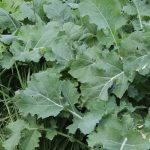
Forages

Five things to consider when selecting alfalfa varieties
Research shows penny-pinching doesn’t pay off
When shopping for the right alfalfa variety, it’s usually well worth splurging for a top yielder, retired University of Wisconsin-Madison professor and forage expert Dan Undersander says. Undersander ran 298 alfalfa yield trials between 1985 and 2016. Results clearly showed penny-pinching doesn’t pay off when it comes to choosing a variety. “Out of those 298 […] Read more

No recipe, only guidelines, to cover crops
There are many factors to consider when growing cover crops
More farmers and ranchers are looking at cover crops for many reasons, ranging from animal health, to reducing erosion, to capturing moisture. But how can people make them work on their operation? Kevin Elmy sees the benefits of a more hands-on approach to cover crop management. Through Cover Crops Canada, he talks with farmers and […] Read more

The sky’s the limit with Ducks Unlimited drone seeding program
Seeding forages into marginal areas has benefits for the farmer, the land and local wildlife
When seeding forages in marginal areas, there might be a new way to do things — from the air. Many producers have marginal land on their operations that have poor yields and are uneconomical. For years, Ducks Unlimited Canada has urged seeding those areas to perennial forages. A recent project with drones could make that […] Read more

Rethinking transition diets for finishing cattle
Feed additive shows promise for accelerating dietary transitions in feedlot cattle
Among the most prevalent diseases in feedlot cattle, ruminal acidosis ranks second only to respiratory diseases in contributing to morbidity, mortality and economic losses. Given its effect on animal welfare and profitability, preventing acidosis remains a key focus in feedlot cattle research. In this month’s column, we want to discuss the role of transition diets […] Read more

Icebergs and native forages: What you can’t see can sink you
Research On the Record with Reynold Bergen
In April 1912, the RMS Titanic sank off Newfoundland’s coast after an iceberg tore a hole in her hull 25 feet below the waterline. Only a tenth of an iceberg is visible above the water; most lurks beneath the surface. Forage plants are similar; how things look on the soil surface may not reflect what’s […] Read more

Forages play role in long-term farm systems
Modified systems, such as bale grazing, also make sense
From the discovery of how-to-create-nitrogen-in-a-lab to genetic diversity concerns in crops and innovative ways to produce forage, Dr. Ralph Martin covered a lot of ground during his opening keynote address at the 15th annual CFGA Conference in Guelph, Ontario, in December. Focusing on perennial forages as a key contributor to sustainable agriculture, Dr. Martin started […] Read more

Reducing ration sorting by feedlot cattle
Cattle sort their feed based on a variety of factors
Diets fed to finishing cattle in Western Canada typically consist of more than 80 per cent barley grain and less than 15 per cent forage on a dry matter (DM) basis, along with minerals, vitamins and byproducts. These diets are inherently dry, enabling separation of individual ingredients at the time of delivery and as cattle […] Read more

Forage research a necessity in the face of decreased acres
Drought tolerance and productivity increases are targets of research programs
Canada has seen a two million-acre decrease in forage land in the last five years. “In over a decade, we are losing about three million acres, and they’re taken over by wheat and canola. It’s a serious concern for us,” Dr. Hari Poudel, forage and breeding research scientist at Agriculture and Agri-Food Canada’s (AAFC) Lethbridge […] Read more

American farmers put plans, investments on hold under Trump USDA spending freeze
Farmers and food organizations across the country are cutting staff, halting investments and missing key funding amid a USDA freeze on a broad swath of grants, more than two dozen farmers and agricultural support groups in seven states told Reuters.

Winter feeding tips for beef cows in late gestation
Transitioning late gestation cows to higher-quality forages is a good strategy
As we begin the New Year and enter the coldest months, many beef cows are in the final third of their gestation period. This is when the fetus experiences its most significant growth. To support this development and ensure the birth of a healthy calf, it is essential to provide the cow with proper nutrition. […] Read more



